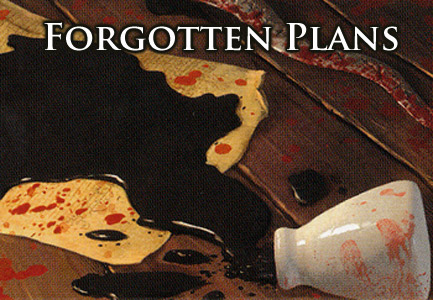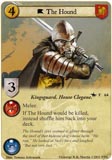Welcome to Card Game DB
Register now to gain access to all of our features. Once registered and logged in, you will be able to create topics, post replies to existing threads, give reputation to your fellow members, get your own private messenger, post status updates, manage your profile and so much more. If you already have an account, login here - otherwise create an account for free today!
Register now to gain access to all of our features. Once registered and logged in, you will be able to create topics, post replies to existing threads, give reputation to your fellow members, get your own private messenger, post status updates, manage your profile and so much more. If you already have an account, login here - otherwise create an account for free today!
Forgotten Plans - Melee
May 07 2012 05:00 AM |
Kennon
in Game of Thrones
Small Council Forgotten Plans Kennon Welcome back to a belated installment of Forgotten Plans. Staton is indisposed for the foreseeable future, so for this week, I’m covering him with an installment that I’ve had on my mind for awhile. Going forward, we’ll probably be rotating authorship to keep the column running until things stabilize.
Welcome back to a belated installment of Forgotten Plans. Staton is indisposed for the foreseeable future, so for this week, I’m covering him with an installment that I’ve had on my mind for awhile. Going forward, we’ll probably be rotating authorship to keep the column running until things stabilize.This week, we’re turning our attention to a keyword that I feel has been further out of the limelight than it deserves to be- melee! People often have slightly different criteria for evaluating keywords, but regardless, those that drift to the top tend to be deadly, renown, and stealth. Though in no particular order, those handily form the top three for most players due essentially to their ability to speed the game. Though each does so in a slightly different way (which is probably worth a whole different article on the way they do so, and why people will rate them slightly differently based on how they value those methods) they effectively all gain power.
The melee keyword actually functions in a very similar way, though it doesn’t appear to jump out to people so quickly as the others. My best guess is that the term “melee†is less familiar to players who aren’t immersed in a medieval world. While “melee†is very Nedly, it isn’t a word used very often in the regular world like stealth and deadly, so it lacks a certain amount of context that many players use to quickly “grok†what it does. For reference then, what it does is make challenges very difficult to defend against. Ok, so I’m oversimplifying the effect here. What it actually does is grant the character with melee +1 strength for each opposing character during a challenge. While this does have application for defense that is worth remembering, the vast majority of the game is centered around going on the offensive, so making attacking with your melee characters is where you’ll get the most value out of the keyword.
In a fight, any melee character will beat a single like sized character hands down and with ties going to the attacker, they can actually trade up one strength in order to swing the victory. A variety of factors in the game actually push this situation or other favorable ones to occur more often than you would think. The largest portion of the quality playable character base in the game sit in the two to three strength range, so by default, this keeps most characters in a one to one position to be beaten by your melee characters. As well, the high occurrence of resets, board sweeps, and character removal in the game work together to tend toward situations where your opponent only actively has one or two characters available to devote to opposing you. Large, expensive characters have always been difficult to field very many of, and the rising strength of Greyjoy choke makes the likelihood of facing large opposing armies who are able to have a base strength higher than your melee character much less. As well, the prevalence of Greyjoy choke skews the game toward small, cheap characters for Setup that are easy to play on a minimum of income. Against such weenies, the melee keyword truly shines by scaling for every character. It’s a little shocking sometimes to realize that no matter how many one strength characters you commit to a challenge, you’ll never overpower the melee character in front of you.
The futility created by these situations often leads opponents to pass on committing their resources to a fight that they know they can’t win, which leads to unopposed challenges. Those unopposed challenges then generate power, which speeds the game. In many ways then, Melee plays similarly to stealth, which is well established in the top three.
With the application of melee established, I thought I’d leave you all a few thoughts on the top melee keyword cards in the game at the moment.
Arrogant Contender (LotR) - While many players are wary of the Ally trait, Arrogant Contender is almost always a guaranteed power. Either the opponent lets the challenge go unopposed for reasons described above, or through a fluke defend and melee pushes you to victory over the top of their character and then claims a power for his ability. While Baratheon decks may find renown to be more reliable, the differentiation in icons and keyword may well round out their decks nicely. Lannister decks, on the other hand, can go a long way with any extra power that they are able to generate, no matter how they get it.
Cotter Pyke (TBC) - Cotter is a beast for Winter decks based on his ability, but he becomes a true beatstick thanks to his specific combination of keywords. Since Intimidate adjusts which characters it is keeping from counting strength based on whatever Cotter Pyke’s strength is at any given moment, it will actually scale up as melee increases his strength. With the size of most characters in the game, Cotter Pyke is effectively unblockable since any number of characters up to 3 strength won’t count against him at all.
Daario Naharis (WLL) - Ok, I had to include Daario on the list because he’s a great card and does indeed have melee. I think that most people will actually be using him for an amazing passive comes into play ability, but the fact that he’s a tricon with melee is nothing to sneeze at, which means that he’ll continue to swing the course of the game pretty strongly even after his ability is used.
The Sparr (APS) - Many may be skeptical of The Sparr based on his base strength of one, but his ability here actually combines overall with the keyword very well. Since his ability lowers the gold counted by the opponent, he’s most likely to be played alongside other choke cards. The characters that you’re most likely to see against you then, are the smaller, cheaper ones that opponents are able to afford, so The Sparr actively works to help set up the earlier described situation where any number of small characters effectively cannot defend against him.
Hope you enjoyed my guest spot here as well. See you all soon!



 Sign In
Sign In Create Account
Create Account













4 Comments